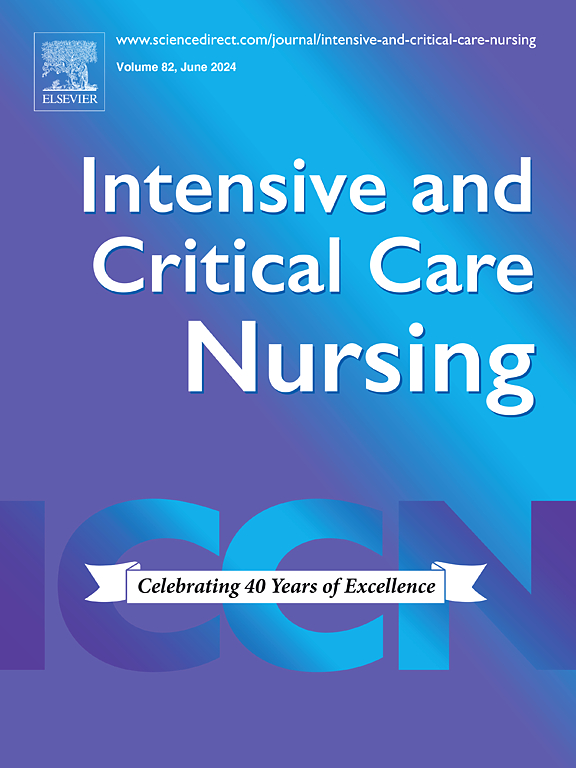Obesity paradox of sepsis in long-term outcome: The differential effect of body composition
IF 4.9
2区 医学
Q1 NURSING
引用次数: 0
Abstract
Background
The obesity paradox has been widely studied recently; however, its impact on the long-term prognosis of sepsis and the protective mechanism of body mass have not yet been sufficiently revealed.
Methods
We retrospectively evaluated the association between obesity and 1-year survival after sepsis in a single university-affiliated hospital and examined the differential effects of muscle mass and adiposity.
Results
Adult patients with sepsis or septic shock (n = 1492) were classified into obese (n = 300) and nonobese (n = 1192) groups. One-year mortality due to sepsis was lower in the obese than in the nonobese (52.0 % vs. 64.8 %; p < 0.001). In multivariate Cox analysis, one-year mortality due to sepsis was independently associated with body mass index (BMI) (hazard ratio 0.96). In the subgroup analysis, 705 were divided into four groups according to the psoas muscle index (PMI) and body fat percentage (BFP) to assess the differential impact of body fat and muscle mass on the one-year outcome of sepsis. One-year mortality was significantly different among the four groups (high BFP/low PMI, 60.6 %; high BFP/high PMI, 42.1 %; low BFP/high PMI, 34.8 %; low BFP/low PMI, 63.2 %; p = 0.002). The adjusted hazards ratio of one-year mortality of sepsis, which was normalized to the low BFP/high PMI group, were 1.2 (p = 0.585), 2.2 (p = 0.016), and 2.3 (p = 0.009) in groups of high BFP/high PMI, high BFP/low PMI, and low BFP/low PMI, respectively.
Conclusion
An obesity paradox has been observed in the long-term outcomes of patients with sepsis, and muscle mass may be more critical than fat mass as a protective mechanism against obesity.
Implications for clinical practice
A high BMI is linked to a more favorable long-term prognosis in sepsis, with muscle mass playing a more critical role than fat mass. A proactive nutritional and conditioning program may benefit patients anticipating major procedures and potential ICU admission. Such preparation could enhance their resilience and improve outcomes when facing critical illness, including sepsis.
脓毒症肥胖悖论的长期结果:身体成分的不同影响
方法我们在一家大学附属医院回顾性评估了肥胖与败血症后 1 年存活率之间的关系,并研究了肌肉质量和脂肪含量的不同影响。结果成人败血症或脓毒性休克患者(n = 1492)被分为肥胖组(n = 300)和非肥胖组(n = 1192)。肥胖组患者因败血症导致的一年死亡率低于非肥胖组(52.0 % vs. 64.8 %; p <0.001)。在多变量 Cox 分析中,败血症导致的一年期死亡率与体重指数(BMI)密切相关(危险比为 0.96)。在亚组分析中,根据腰肌指数(PMI)和体脂百分比(BFP)将 705 人分为四组,以评估体脂和肌肉质量对败血症一年期结果的不同影响。四个组别的一年死亡率有明显差异(高体脂率/低腰肌指数,60.6%;高体脂率/高腰肌指数,42.1%;低体脂率/高腰肌指数,34.8%;低体脂率/低腰肌指数,63.2%;P = 0.002)。与低 BFP/ 高 PMI 组相比,高 BFP/ 高 PMI 组、高 BFP/ 低 PMI 组和低 BFP/ 低 PMI 组一年脓毒症死亡率的调整后危险比分别为 1.2(p = 0.585)、2.2(p = 0.016)和 2.3(p = 0.009)。对临床实践的启示 高体重指数与败血症患者更有利的长期预后有关,肌肉质量比脂肪质量发挥着更关键的作用。积极主动的营养和调理计划可能会使预计接受重大手术和可能入住重症监护室的患者受益。这样的准备工作可以增强他们在面对危重疾病(包括败血症)时的应变能力并改善预后。
本文章由计算机程序翻译,如有差异,请以英文原文为准。
求助全文
约1分钟内获得全文
求助全文
来源期刊

Intensive and Critical Care Nursing
NURSING-
CiteScore
6.30
自引率
15.10%
发文量
144
审稿时长
57 days
期刊介绍:
The aims of Intensive and Critical Care Nursing are to promote excellence of care of critically ill patients by specialist nurses and their professional colleagues; to provide an international and interdisciplinary forum for the publication, dissemination and exchange of research findings, experience and ideas; to develop and enhance the knowledge, skills, attitudes and creative thinking essential to good critical care nursing practice. The journal publishes reviews, updates and feature articles in addition to original papers and significant preliminary communications. Articles may deal with any part of practice including relevant clinical, research, educational, psychological and technological aspects.
 求助内容:
求助内容: 应助结果提醒方式:
应助结果提醒方式:


